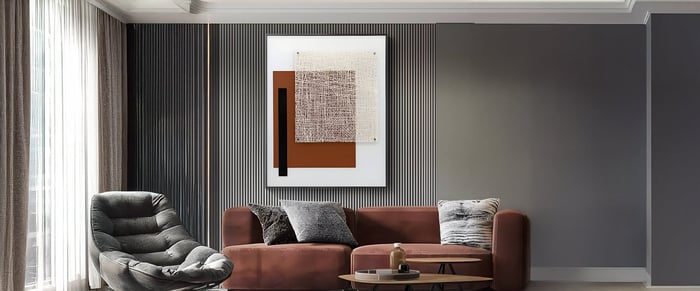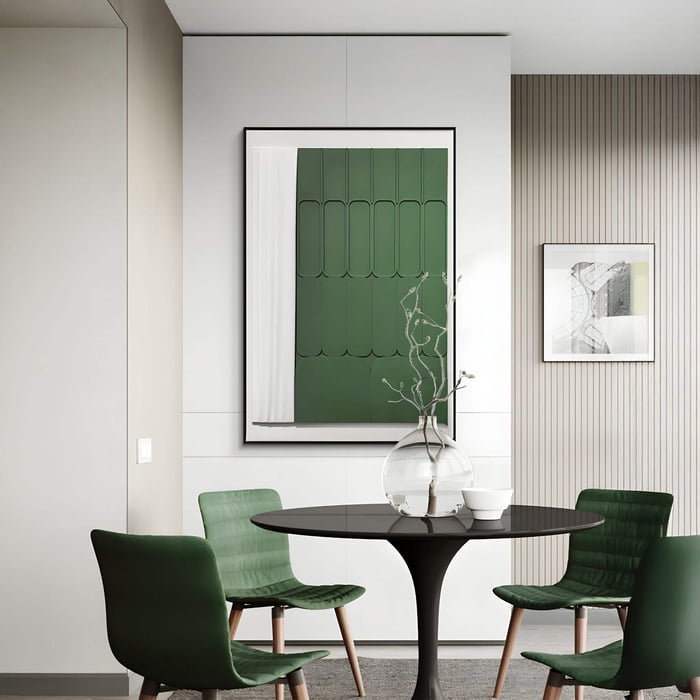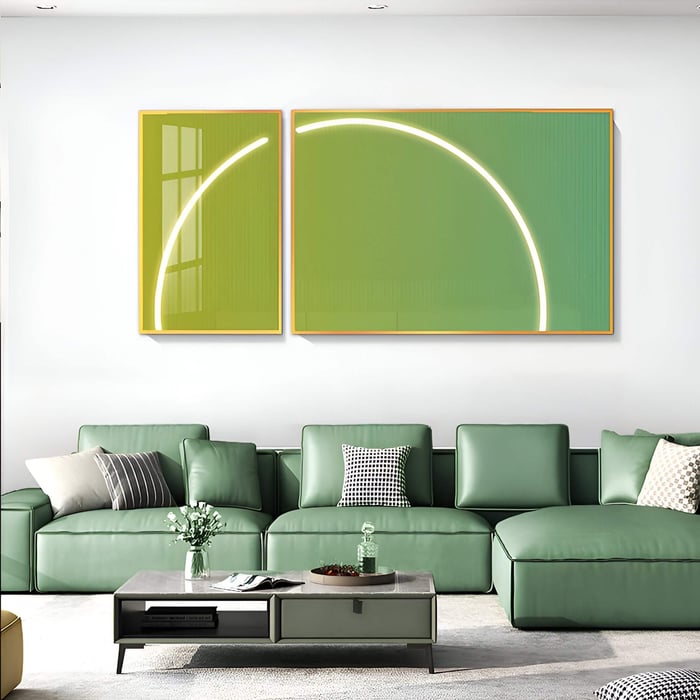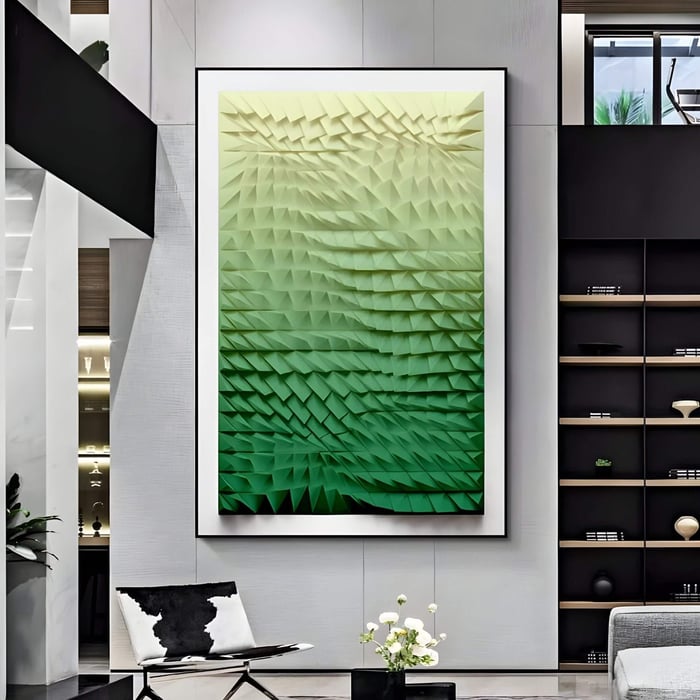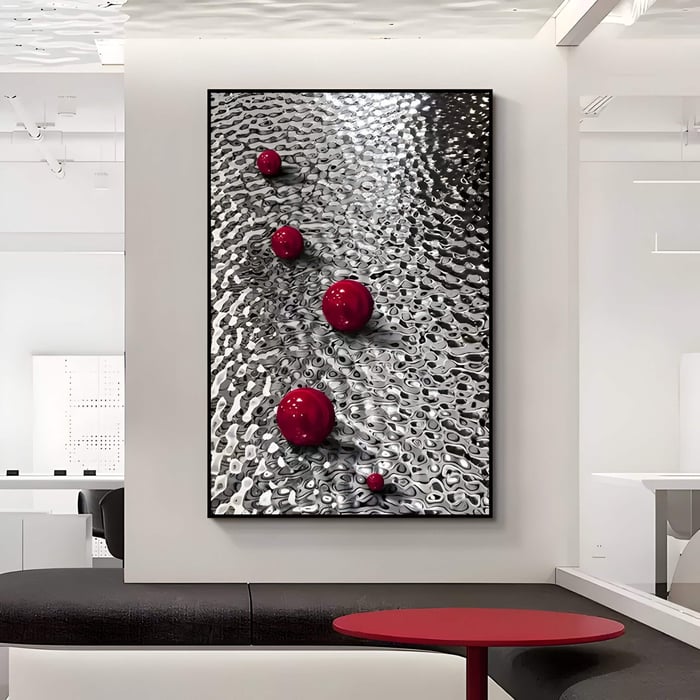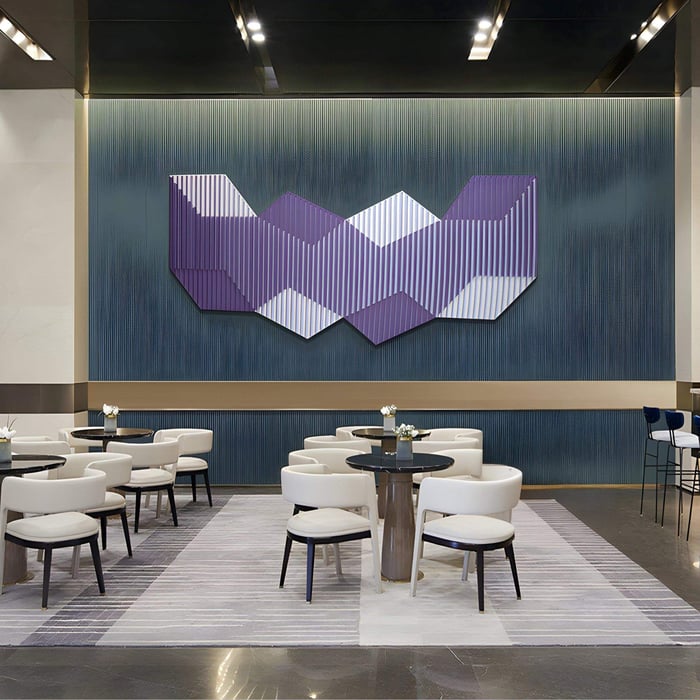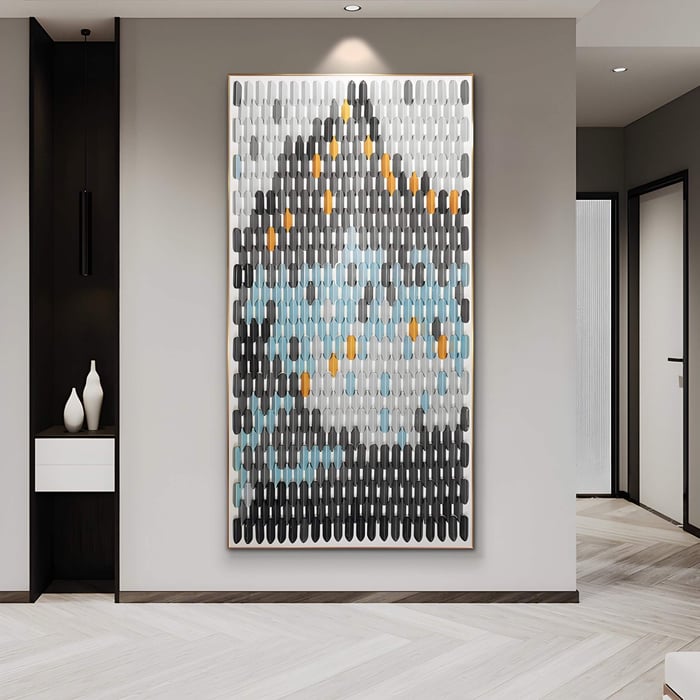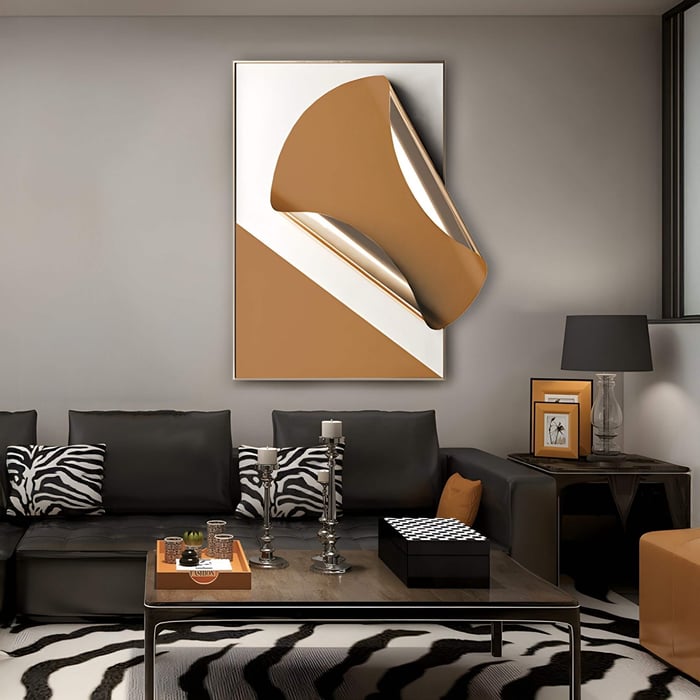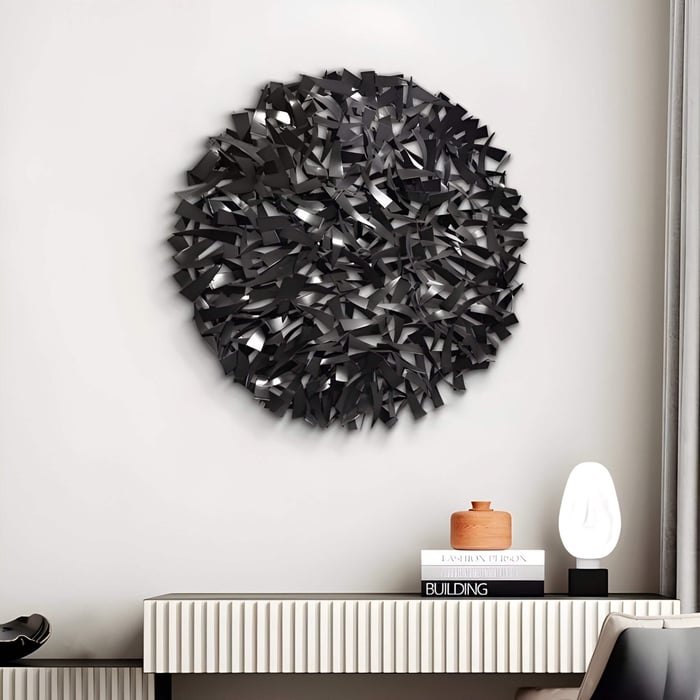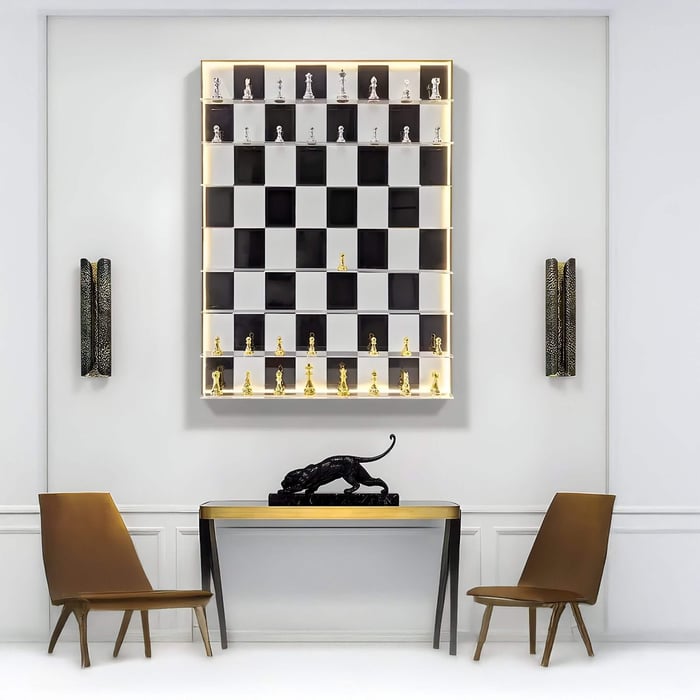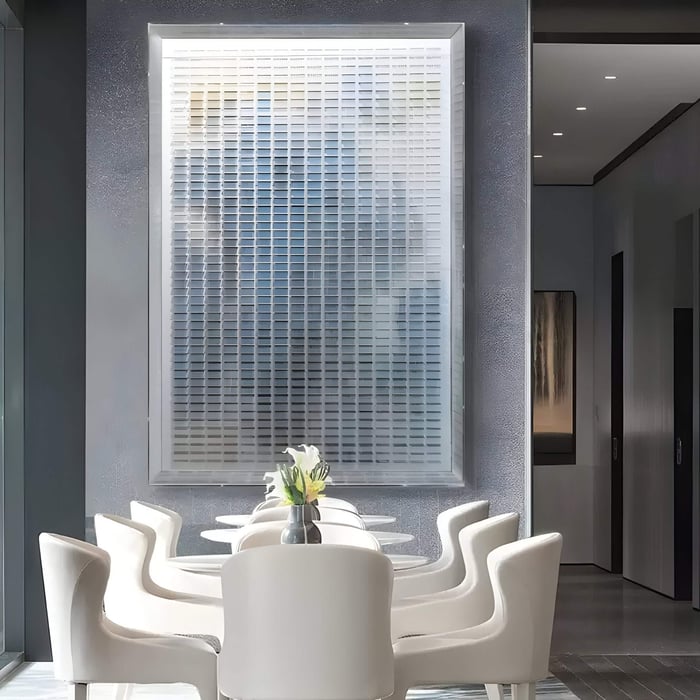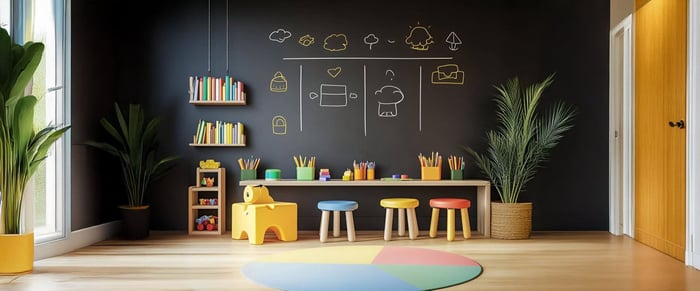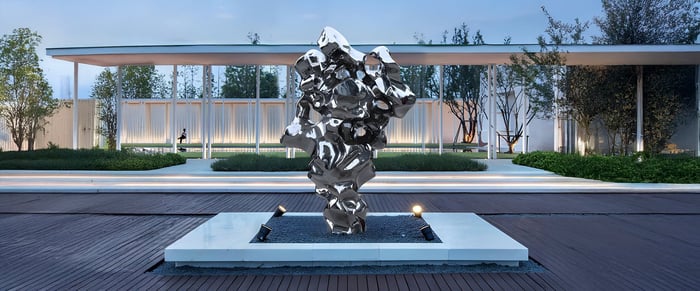Table of Contents
- Introduction - How Materials Transform Geometric Art
- Canvas & Paper: Classic Foundations
- Wood & MDF: Natural Warmth and Structure
- Metal & Stainless Steel: Industrial Edge and Longevity
- Acrylic & Resin: Glossy Modern Statements
- Stone & Ceramic Surfaces: Earthy and Sculptural
- Leather & Fabric: Soft Luxury
- Innovative & Specialty Materials
- Mixed Media Geometric Art: Combining Strengths
- Choosing the Right Material: Match Aesthetic, Budget & Room Conditions
- Styling & Installation Tips per Material
- Conclusion - Material Choice Defines Geometric Art Impact
Introduction - How Materials Transform Geometric Art
Material choice is one of the most important factors in how geometric art is experienced. It influences not only the texture and colour depth but also the mood, durability, and interaction with light. Whether you’re drawn to minimalist geometric materials like smooth acrylic panels or the earthy charm of sandstone art textures, the medium shapes both the aesthetic and the longevity of the piece.
Geometric wall art materials now range far beyond paint on canvas. Wood art panels, resin art, ceramic geometric tiles, leather wall panels, LED and neon geometric designs, and even fabric hangings each offer unique qualities. This guide explores how different materials, from traditional to cutting-edge, affect style, maintenance, and placement, so you can choose pieces that truly resonate with your space and vision.
Canvas & Paper: Classic Foundations
Canvas remains a timeless choice for geometric paintings, offering a painterly depth that works across styles, from bold hard-edged geometrics to soft watercolour gradients. Stretched canvas adapts easily to different framing methods, or can be left unframed for a contemporary gallery look.
Paper, on the other hand, lends itself to framed prints, minimalist designs, or finely detailed patterns. High-quality art paper can beautifully hold geometric ink drawings or layered mixed media.
Pros:
Lightweight and easy to hang.
Wide variety of textures and finishes.
Adaptable to many geometric decor styles.
Cons:
Canvas can be prone to warping if exposed to humidity.
Paper requires protective framing to avoid UV and moisture damage.
Wood & MDF: Natural Warmth and Structure
Wooden geometric wall panels bring an organic warmth to interiors. Natural oak, walnut, or birch panels show off grain patterns that add depth to angular designs. MDF offers a uniform, smooth surface ideal for painted or carved geometric decor.
Layered or cut-out wood panels create tactile relief effects, perfect for both modern art and mid-century-inspired interiors. Sealing the wood protects it from warping, especially in areas with fluctuating humidity.
Care Tip: Use a dry microfiber cloth for dusting and avoid direct water contact. A matte sealant can preserve the natural look without adding gloss.
Metal & Stainless Steel: Industrial Edge and Longevity
Metal geometric art—whether aluminium, iron, or stainless steel—delivers a crisp, industrial aesthetic. Aluminium is lightweight and can be powder-coated for colour, while stainless steel is corrosion-resistant, making it suitable for kitchens, bathrooms, or outdoor spaces.
Polished or brushed surfaces work well in modern art contexts, especially when paired with high-contrast colour schemes. Stainless steel sculptures and panels can double as statement mirrors in geometric form.
Best for: High-impact focal points where strength and durability matter.
Acrylic & Resin: Glossy Modern Statements
Acrylic panels bring vibrant colour retention and a perfectly smooth surface, making them ideal for bold, minimalist geometric shapes. They interact beautifully with light, especially when backlit or mounted with floating frames.
Resin art offers even more versatility, dimensional finishes, embedded metallics, or textured 3D wall sculpture effects. Resin’s ability to mimic other materials, from marble-look resin to high-gloss lacquer, makes it a favourite for modern geometric wall art materials.
Light Interaction Tip: Position under angled spotlights to emphasise surface depth and shimmer.
Stone & Ceramic Surfaces: Earthy and Sculptural
For a grounded, timeless feel, stone and ceramic geometric designs bring tactile richness. Marble panels offer high-end elegance, with veining patterns lending complexity to geometric layouts. Sandstone art textures add earthy warmth, while ceramic or porcelain tiles are durable, easy to clean, and perfect for intricate, small-scale geometrics.
Uses:
Marble and sandstone for feature walls or statement panels.
Ceramic geometric tiles for splashbacks, bathroom walls, or outdoor decor.
Leather & Fabric: Soft Luxury
Leather wall panels in geometric patterns exude a rich, tactile presence, perfect for adding luxury to offices or bedrooms. They also have acoustic benefits, softening sound in large spaces.
Fabric wall hangings, from quilted designs to woven tapestries, can soften angular shapes and bring a relaxed feel to geometric decor.
Care Tip: Keep leather away from direct sunlight to avoid fading, and vacuum fabric panels with a low-suction attachment.
Innovative & Specialty Materials
Geometric art has embraced new materials and lighting technologies:
LED & Neon Geometric Designs – Add glow to outlines and shapes, turning static patterns into interactive light art.
Cardboard & Paperboard – Eco-friendly geometric wall art for temporary or lightweight installations.
Enamel Coated Metal – Vivid, glossy colour that lasts, ideal for outdoor modern art.
Iron Art Panels – Bring rustic-industrial appeal with a raw, unfinished feel.
Mixed Media Geometric Art: Combining Strengths
Mixed media geometric decor layers contrasting materials for depth and visual complexity. Think wood panels with resin inlays, metal frames around sandstone tiles, or fabric set within acrylic structures.
This approach allows artists to tell richer stories, combining the warmth of natural wood with the high-gloss precision of resin art, or integrating ceramic pieces into LED-lit panels. The trend towards mixed media art also ties into eco-friendly geometric wall art, as reclaimed or surplus materials can be incorporated into new designs.
Choosing the Right Material: Match Aesthetic, Budget & Room Conditions
Each material suits a different mood and practical need:
Canvas art – Flexible for any space, affordable to large scale.
Wood art panels – Warm, tactile, ideal for living rooms.
Acrylic or resin art – High-impact modern statement.
Ceramic & stone – Durable, great for high-moisture spaces.
Leather wall panels – Luxurious and soft, best for low-traffic areas.
Consider humidity, light exposure, and cleaning ease before deciding. For example, resin wall panels suit a bathroom, while leather works better in a bedroom or study.
Styling & Installation Tips per Material
Mounting – Canvas is light enough for small nails; wood and MDF panels may need wall anchors; heavier stone or ceramic requires professional installation.
Lighting – Side-light wood for depth, spotlight resin for gloss, backlight acrylic for a modern glow.
Framing – Canvas and paper benefit from clean framing, while large wood and acrylic art panels can remain unframed for a bold, architectural feel.
Conclusion - Material Choice Defines Geometric Art Impact
From the subtle weave of canvas to the sheen of stainless steel, the texture of sandstone, or the gleam of resin, material choice defines how geometric art feels and functions in a space. Matching your chosen medium to your aesthetic goals, budget, and environment ensures your geometric decor remains both striking and practical.
Whether you’re drawn to minimalist geometric material finishes or mixed media complexity, the right choice will enhance not just your wall, but the entire room’s atmosphere.
Explore a wide range of geometric art collections to see how different materials can transform a concept into a compelling visual centrepiece.














































































